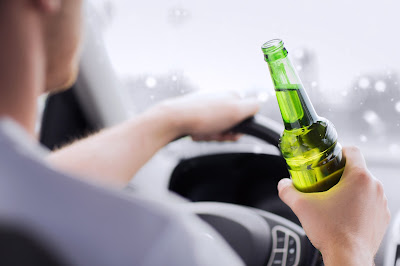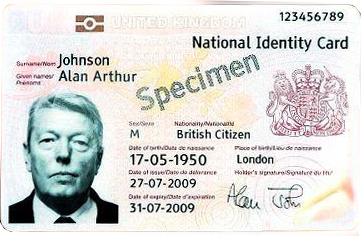Drink driving
One thing I have found since specialising in motoring law
is that it is an area that is poorly understood by many people, criminal
lawyers and judges included. I have heard comments from fellow solicitors that
include, “I don’t need any papers to advise him about his case, it’s only
drink driving.” And, “there are no defences to drink driving.” Most
worryingly I’ve heard more than one court legal adviser tell their magistrates
that “it is impossible to avoid a driving ban following a drink driving conviction.”
None of these things are true and I hope, through a series of blog posts, to
give a brief glimpse into the law of motor vehicles and alcohol.
In this first post I think it’s worth spelling out exactly
what drink driving is and what needs to be proven to secure a conviction.
The first thing to know is that there are two different
types of drink driving and they require the prosecution to prove different
things. We’ll start with the older version of the offence, driving while unfit
through drink or drugs.
It won’t come as a surprise to hear that the first thing
the police must prove is that the suspect drove something. The Road Traffic Act
1988 says that the thing being driven must be a “mechanically propelled vehicle”,
so we can already see that the law does not apply to bicycles, horses or
anything that is propelled without some form of engine driving it. The driving
cannot happen just anywhere though, an offence is only committed if the driving
occurs on a “road or other public place”. It is therefore important to read the
wording of a charge, as if a prosecutor charges “driving on a road” but you can
establish that the place where the driving occurred was not a road then the
suspect is not guilty. Equally, I represented a lady who was accused of driving
in a public place; however, I was able to convince the court that the area she
was in was not open to the public and she was acquitted despite accepting that
she had driven her car while unfit to do so.
The need to prove driving is something that is often
overlooked in my experience. I’ve lost count of the number of cases I’ve looked
at where the only evidence of driving is the hearsay of an anonymous report from
somebody calling the police about a suspected drink driver. In those cases,
unless the suspect is found by police actually driving the car or confesses
under caution the chances are that they will be acquitted at trial.
We turn then to fitness to drive. Evidence for impairment
will usually come from a police officer who will give evidence that in his or
her opinion the suspect was drunk and not fit to drive. In recent years, the
police have introduced preliminary impairment tests, the results of which can
be given in evidence to support the officer’s opinion of the suspect’s fitness
to drive; however, we still see cases where the evidence is no more than the
opinion of a single PC with no meaningful reasons for that opinion given.
Although the police can rely on evidence of a breath, blood or urine specimen
to show that a person is unfit to drive there is no requirement that they do
so. In fact, this version of the office is usually relied upon where it has not
been possible to obtain a specimen for some reason that is not related to the
suspect’s refusal to provide.
This brings us on to the second type of drink driving,
the modern version. Here the prosecutor must prove the same elements in respect
of driving but instead of proving that the suspect was unfit to drive they must
merely show that he was over the alcohol limit at the time he drove. This is an
easier hurdle for the police to establish because once they have a breath
reading you would hope it would be accurate, but mistakes can still be made. For
example, suspects must make a free choice to provide the specimen even though
it is a requirement that they comply. This means they must be warned, in a way
they can understand, that failing to provide will mean they commit a separate
offence and that they can be prosecuted for it. If the warning is not given,
then the result of the test is not admissible and so the prosecution case will
fail. Not so long ago, I represented a man who spoke broken English. The police
officer began the test using an interpreter on the telephone but then became
angry with the client who he believed was faking his level of English. The
interpreter was cut off and the PC proceeded to give the statutory warning in
English only. At trial we were able to establish that the suspect had not understood
the warning and thus he was acquitted. We have also had similar results with
clients who were deaf and where no effort was made to obtain the services of a
sign language interpreter.
Where a specimen of blood has been taken there are
frequently questions arising about the testing and handling process, e.g.
lengthy gaps between the specimen being taken and it being booked into custody.
Anybody who reads the news cannot fail to notice that there seem to be regular
problems with testing laboratories, with one lab having been found faking
results while the House of Lords science and technology committee warned last
month of the decline in forensic science over the past few years. Where a
suspect is surprised at the result of his blood test, he would be well advised
to review the findings properly.
The police can also use urine to obtain an alcohol level.
This is, in my opinion, the worst possible way of taking a specimen. While
breath and blood provide “live” alcohol readings, i.e. they show the level of
alcohol in a person’s body when the specimen was taken, urine provides an
historical reading, i.e. it gives the alcohol level since the time the bladder
was last fully emptied. This is why the urine procedure requires the suspect to
provide two specimens and for the first to be discarded rather than tested. Unfortunately,
many police officers fail to understand the importance of a suspect fully emptying
their bladder when the first specimen is provided and then allowing it to refill
before the second specimen is provided. Because urine gives the alcohol reading
since the time the bladder was last emptied failing to fully empty the bladder is
likely to result in an artificially high alcohol reading, which does not
reflect the suspects actual alcohol level at the time of the test.
This is just a summary of what could go wrong when a
specimen is taken and analysed but I hope it sets out the importance of
checking the forensic science in drink driving cases, because it could be
wrong!
We’ve looked at a few of the ways the prosecution case
can be undermined so what about defences? In truth there is really only one
true defence to drink driving: duress. If you can show that you drove because not
doing so would result in very serious harm or death to you or somebody else,
then you will be able to establish a defence. It is really hard to
establish that level of threat. On the plus side, it is often worth running a
duress argument if you think it’s arguable because you a) give yourself a
chance of acquittal; and b) set yourself up for a special reason to avoid disqualification
even if you lose. By way of example, I represented a lady who upon leaving a
bar intending to walk the short distance home encountered somebody she knew and
who had been violent toward her in the past. Fearing an attack my client ran to
her car and drove home. She lost the duress argument as it turned out, unbeknownst
to me when I took instructions and advised, that she had a man with her so the
attacker would have been outnumbered had she attacked my client. However, the
judge readily accepted that the special reason had been established and the
client was allowed to carry on driving.
So, I hope we can see that it is possible to defence
drink driving cases successfully because like all criminal offences it requires
the prosecution to prove their case using admissible evidence and reliable forensic
science. In future posts I will talk about other areas of drink driving law,
what can go wrong and how suspects can defend themselves in court.



"this version of the office" - offence?
ReplyDelete